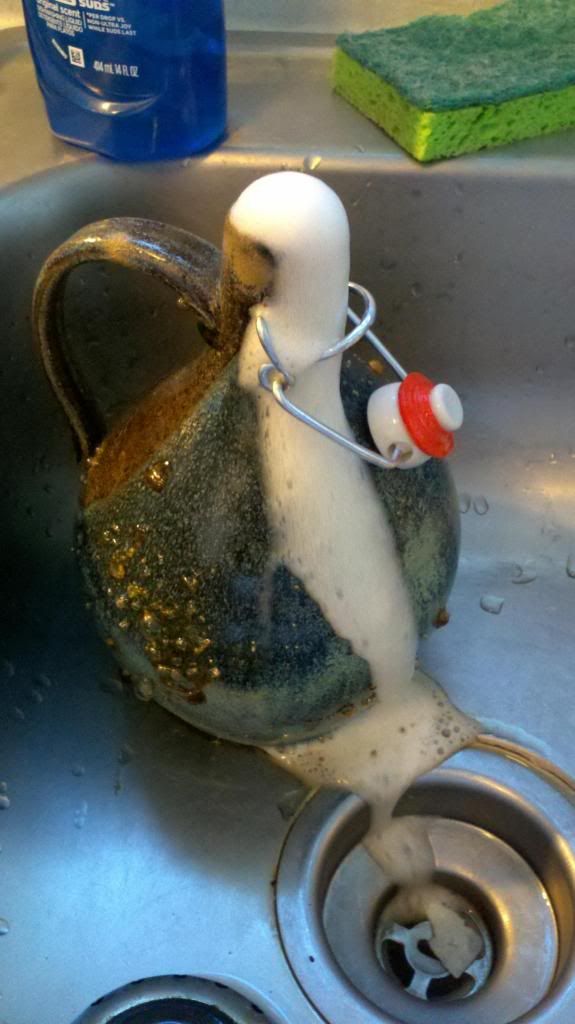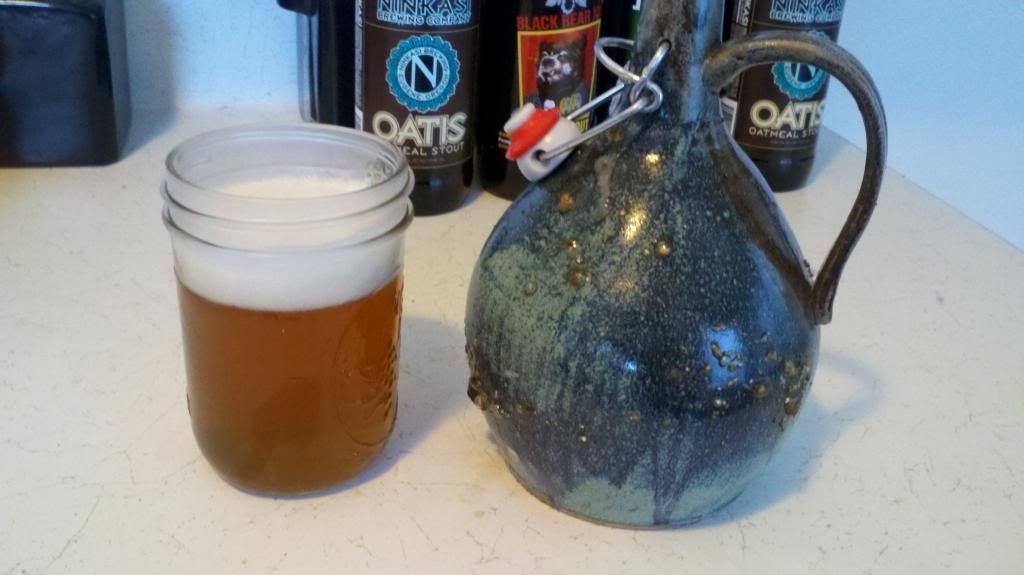Incredible work !!!
An idea would be one that look like a hop cone.
An idea would be one that look like a hop cone.



I just returned from break and was eager to check my bottles. I gave two away over christmas so I only have two left with beer. The blue jug style had spots of sticky dried beer all over the side, so I figured it had either broken somewhere or had been leaking out of the top from not being tight enough. However when I opened the top it made a very loud pop and this is what I got,


I was pretty startled because I had thought that it had lost any carbonation. You can see all the little sticky spots in the picture, my best guess is that the inside didn't get completely glazed and the beer made its way through the porous clay wall to the outside, because there are tiny little chip like spots where the sticky beer was. Anyways I found it to be quite strange.
The second bottle I have still looks perfectly fine and I will get some more photos whenever I open it, probably sometime this next week.











You were just using the EZ-top to seal it, correct? In my experience they won't work for long term storage even in commercial glass bottles. Have to cap it then use the EZ-top when serving. Mostly aesthetic. OK for mead where I might drink a liter over a couple days.
JohnWilliamson062 said:You were just using the EZ-top to seal it, correct? In my experience they won't work for long term storage even in commercial glass bottles. Have to cap it then use the EZ-top when serving. Mostly aesthetic. OK for mead where I might drink a liter over a couple days.
I thought about Grolsch LONG before I posted that, but what do you think their shelf life is? Do you think they want bottles out for 2-3 months in the light?Grolsch will be disappointed to hear that!
I have noticed that with most store bought flip top style bottles that the gaskets tend to be glued to the lid so that there is only a possible leak on one side.
My guess is that there is some variation to how tight the lids are being held down because there are slight differences in how far down the holes are that hold the entire mechanism to the bottle. I can tweak the metal wire in order to get a tighter or looser fit and on the next batch I might make sure all the caps flip on much tighter in order to hopefully seal better. Any thoughts?
Also revvy had mentioned pressure testing the bottles before hand in order to see if they would stand up to the pressure of carbonation. Does anybody know of a way to do this, preferably safely? Because it would be handy on my next batch of bottles.
My guess is that there is some variation to how tight the lids are being held down because there are slight differences in how far down the holes are that hold the entire mechanism to the bottle. I can tweak the metal wire in order to get a tighter or looser fit and on the next batch I might make sure all the caps flip on much tighter in order to hopefully seal better. Any thoughts?
Also revvy had mentioned pressure testing the bottles before hand in order to see if they would stand up to the pressure of carbonation. Does anybody know of a way to do this, preferably safely? Because it would be handy on my next batch of bottles.

... I suppose this first bottling if they hold carbonation will be the test. I don't imagine them having a problem, however I don't have a lot of experience with brewing and carbonating.
Have you considered slip casting and copying one you really like?
This is my next project, I am working on making the molds for two pieces this weekend. However I will continue to throw them as well. In seven weeks or so I will be doing a wood fire with all my new work. My plan is to make multiple matching bottles with a nice case to go with them, of course with slight variations from the wood firing.